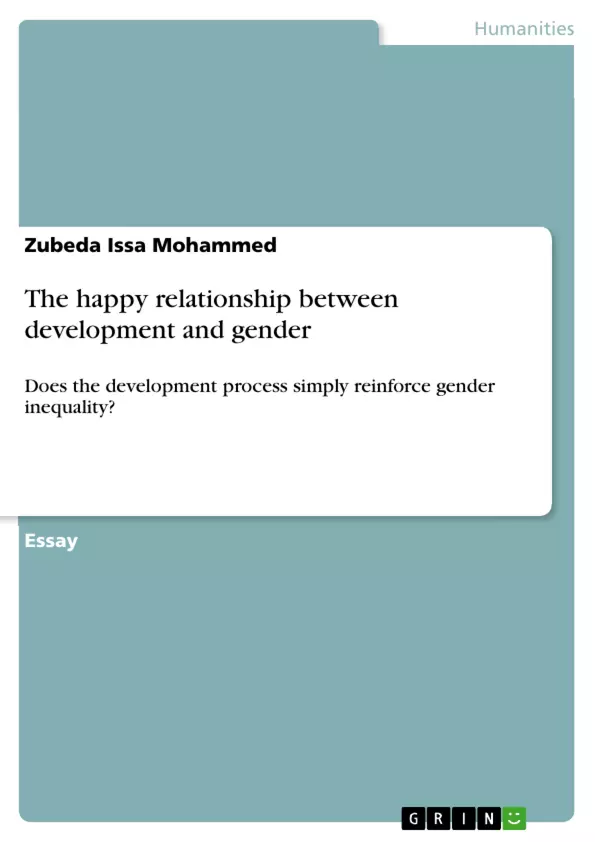Gender inequality implies to the unequal treatment of a person based on their gender. This concept arises from the differences in social constructed gender roles within the society. Gender inequality has been one of the social concerns during the world history of development. In today’s world however, every individuals and organizations are aware that without the predication of women, the development process will not be as effective and sustainable. Therefore many organizations as well as institutions have debated on the issues concerning gender and development, and have made significant improvement to make development gender-equitable. For instance the United Nations General Assembly adopted the Convention on the Elimination of All Forms of Discrimination against Women (CEDAW) in 1979 which generally describes the several agendas for national actions to end discrimination against women whether be at home or at workplaces (United Nations 2009). The introduction of policies, procedures and guidelines concerning gender equality has improved the rights and statuses of women. Hence the gender gap has been decreasing each year due to effective development processes which integrates women, empower them and give them access to join leadership positions in both the economic and political sphere. This piece of writing aims to examine how the development processes reinforces gender equality in terms of the decreasing feminization of poverty, the inclusion of women in the development processes and the differences within symbolic dimensions of gender since gender is particularly referred as the socially constructed roles, behaviours and characteristics that a certain society regard as appropriate for women and men.
Table of Contents
- Introduction
- The differences within the symbolic dimensions
- Feminization of Poverty
- The inclusion of women in the development process
Objectives and Key Themes
This essay aims to examine how development processes reinforce gender equality by exploring three key areas: the decreasing feminization of poverty, the inclusion of women in development processes, and the evolving symbolic dimensions of gender.
- The impact of development processes on the social construction of gender roles and behaviors
- The phenomenon of feminization of poverty and its implications for women's economic and social well-being
- The changing landscape of women's participation in the economic and political spheres
- The role of development policies and initiatives in promoting gender equality
- The evolving perspectives on gender roles and opportunities in a globalized world
Chapter Summaries
Introduction
This section introduces the concept of gender inequality and its historical context within development. It highlights the growing awareness of the importance of women's participation in development and the efforts made to achieve gender-equitable development, citing the Convention on the Elimination of All Forms of Discrimination against Women (CEDAW) as an example.
The differences within the symbolic dimensions
This chapter examines the socially constructed roles, behaviors, and characteristics associated with gender in different societies. It discusses how these symbolic dimensions influence gender inequality and how development processes are contributing to a shift in these perceptions.
Feminization of Poverty
This section explores the phenomenon of feminization of poverty, which refers to the disproportionate representation of women among the world's poor. It analyzes the factors contributing to this trend, including limited access to education, employment, and resources. The chapter also discusses the evolving perspectives on poverty and the role of social and cultural exclusion in perpetuating gender inequality.
The inclusion of women in the development process
This chapter examines the progress made in promoting women's inclusion in development processes. It highlights the impact of development policies and initiatives on women's participation in the social, political, and economic spheres, particularly in terms of education, employment, and leadership roles.
Keywords
The main keywords and focus topics of this essay include gender equality, development processes, feminization of poverty, women's inclusion, symbolic dimensions of gender, social construction of gender roles, development policies, and gender-equitable development.
- Quote paper
- Zubeda Issa Mohammed (Author), 2013, The happy relationship between development and gender, Munich, GRIN Verlag, https://www.hausarbeiten.de/document/279869


